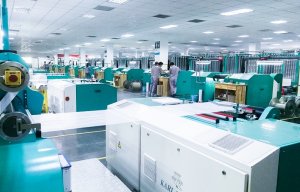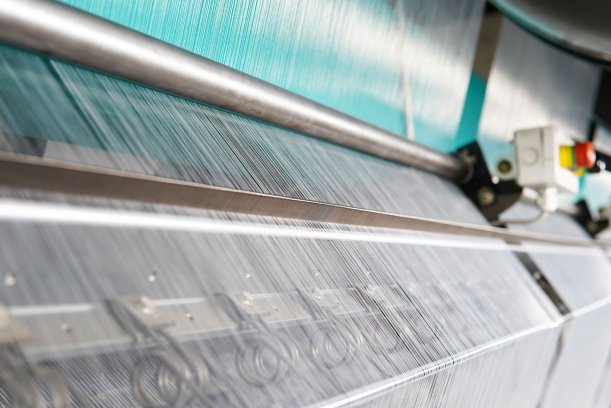
Highsun relies on Karl Mayer’s yarn warping machines
Sidestepping complex processes and considerable trial-and-error loops.

8th May 2024
Innovation in Textiles
|
Obertshausen, Germany
The new Energy Efficiency Solution for warp knitting machines from Karl Mayer is a cloud-based solution that combines the latest sensor technology with a specifically-developed analysis software.
“Energy efficiency is becoming increasingly important for production companies, due to rising energy costs, stricter environmental regulations and a growing awareness of environmental concerns, particularly in the machinery sector,” says Karl Mayer digital product owner Markus Bahde. “Through active and continuous management, huge savings in costs and CO2 emissions are possible,”
Continuously recording and analysing data on real consumption enables companies to manage energy efficiently, he adds, but may require a significant amount of measurement technology, personnel and time. In addition, there are currently only a few experts with real-world experience in energy issues from the field of production. As a result the implementation of energy data analysis often involves complex processes with considerable trial-and-error loops.
With its new Energy Efficiency Solution, Karl Mayer is taking a simpler and more efficient path by enabling machine users to visualise selected data to identify their energy consumption, by displaysingthe captured and processed data of networked machines and recording the power consumption for production, heating and standby operation modes.
Companies wishing to leverage these opportunities will have easy access to the solution via my.KM.ON, the Karl Mayer customer portal.
They can gain an overview of their production processes by displaying the energy data of individual machines and the entire machine fleet in real time, for example, generating an energy data analysis from the past and using it fir their own energy reports. In addition, it is possible to efficiently control machine heat-up without manual configuration on site.
An overview of the current consumption data with a graduated viewing depth is another benefit and for more dedicated monitoring, the values for the current day, week, month and year can be output.
A closer look reveals more details. The display also contains the details of the performance and energy data of an individual machine, broken down according to machine status and parameters for the power supply.
Historical analysis
In addition to recording energy consumption, the Energy Efficiency Solution provides analysis of the data. On the basis of processed data from an elapsed time period, customers can compare the energy data of different machines or different fabrics to each other. The comparison of the consumption values of the machines can be adapted to analysis goals by using different variables. The reference range to which the consumption refers – for example, per day, month or year – and the period and subject of the comparison can be set. Likewise, it is possible to choose the amount of energy used, its cost, and CO2 emissions.
The comparative view of textile products includes the total amount of energy consumed and the total costs incurred. Net consumption – i.e. consumption for the actual production process without energy requirements during stoppages – is also visible.
Based on the analysed historical energy data, the Energy Efficiency Solution enables customers to generate energy reports for individual machines or for their entire machine fleet and save them as PDF files. Monthly and annual reports with a focus on the CO2 or kWh value are possible.
Heating regulation
To reduce energy consumption, it may be useful to switch off the machine heating system during stoppages. The Energy Efficiency Solution offers the option of managing the heating operation for the entire machine park without manual configuration on site, which is extremely efficient. Customers simply define the desired daily production times in one or more templates and assign them to the individual machines. The software then develops the respective heat-up times from the input information. With the help of the templates, a weekly timer schedule can also be created. Each individual machine can be put into production readiness on the predetermined date according to it.
On the basis of all the information and options offered by the Energy Efficiency Solution, customers can take effective measures to reduce energy consumption and in turn, their CO2 emissions.
“In a real-world pilot project, our Energy Efficiency Solution has already achieved monthly energy savings of between 5-10%” said Markus Bahde. “The possible savings depend of course, on the use and capacity utilisation of each machine and the maturity of the measures taken so far to reduce consumption. It is also possible to quantify and demonstrate the reduction in CO2 emissions.”
The launch of the Energy Efficiency Solution is planned for May 2024 and it will be rolled out gradually. The Kamcos 2 machines from Karl Mayer will be included in the launch, but Markus Bahde and his team are already working on using the solution on KAMCOS 1 machines. They want to use machine-side product updates for successive retrofitting. In future, the Energy Efficiency Solution will be available for all Karl Mayer machines.

Business intelligence for the fibre, textiles and apparel industries: technologies, innovations, markets, investments, trade policy, sourcing, strategy...
Find out more